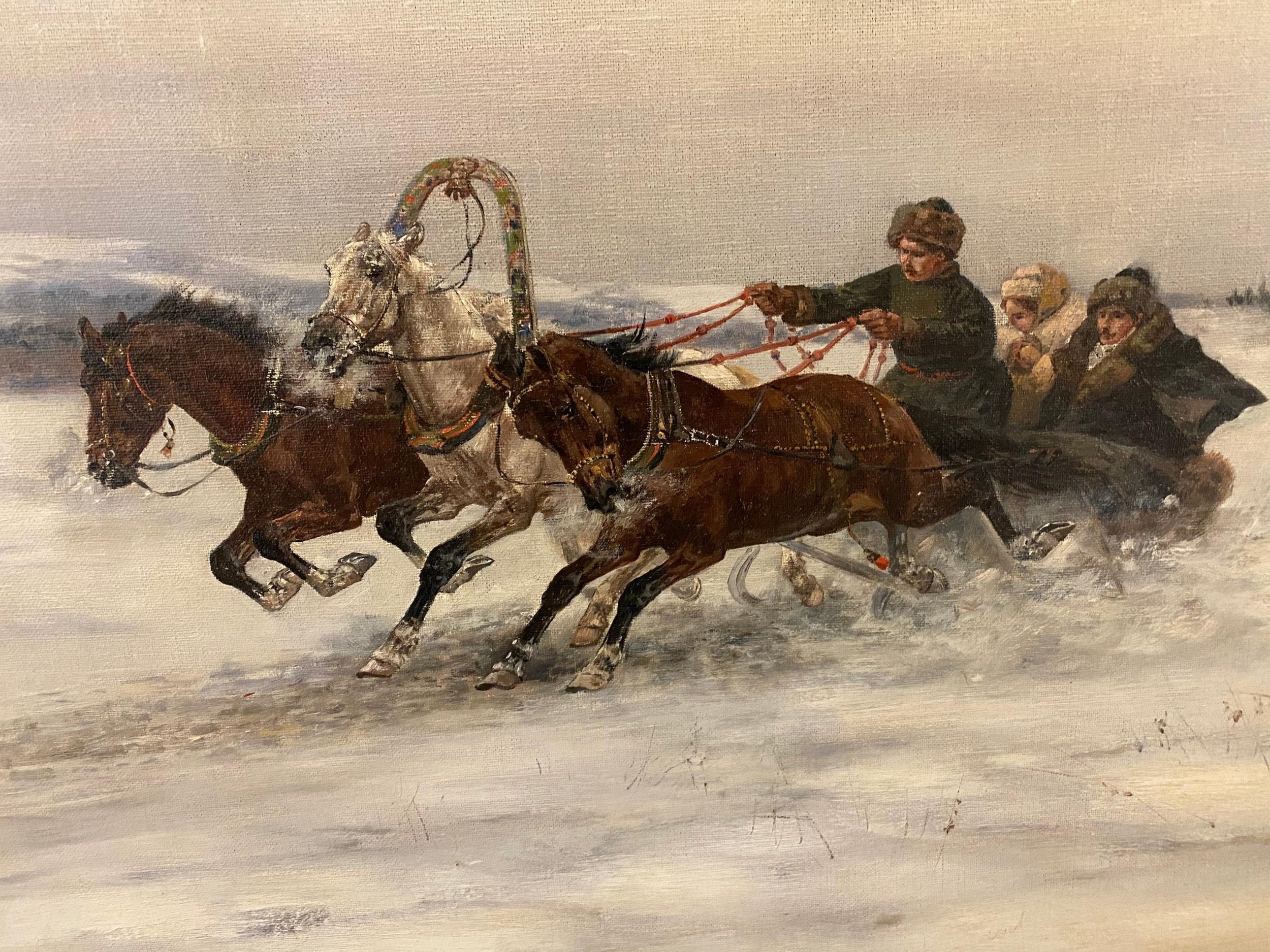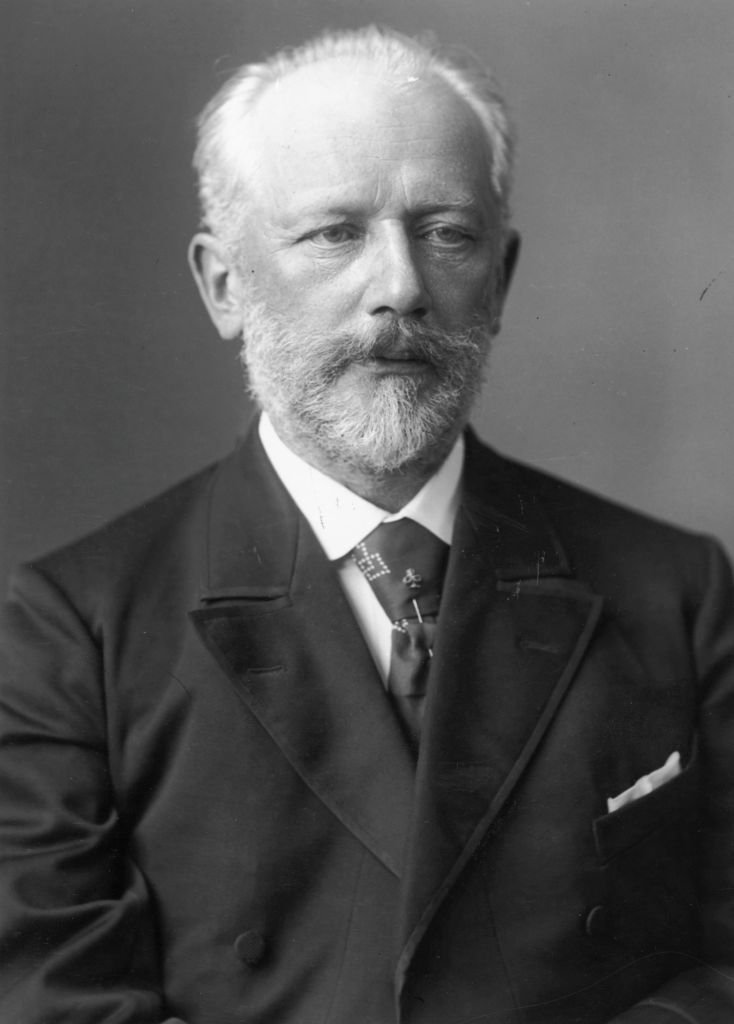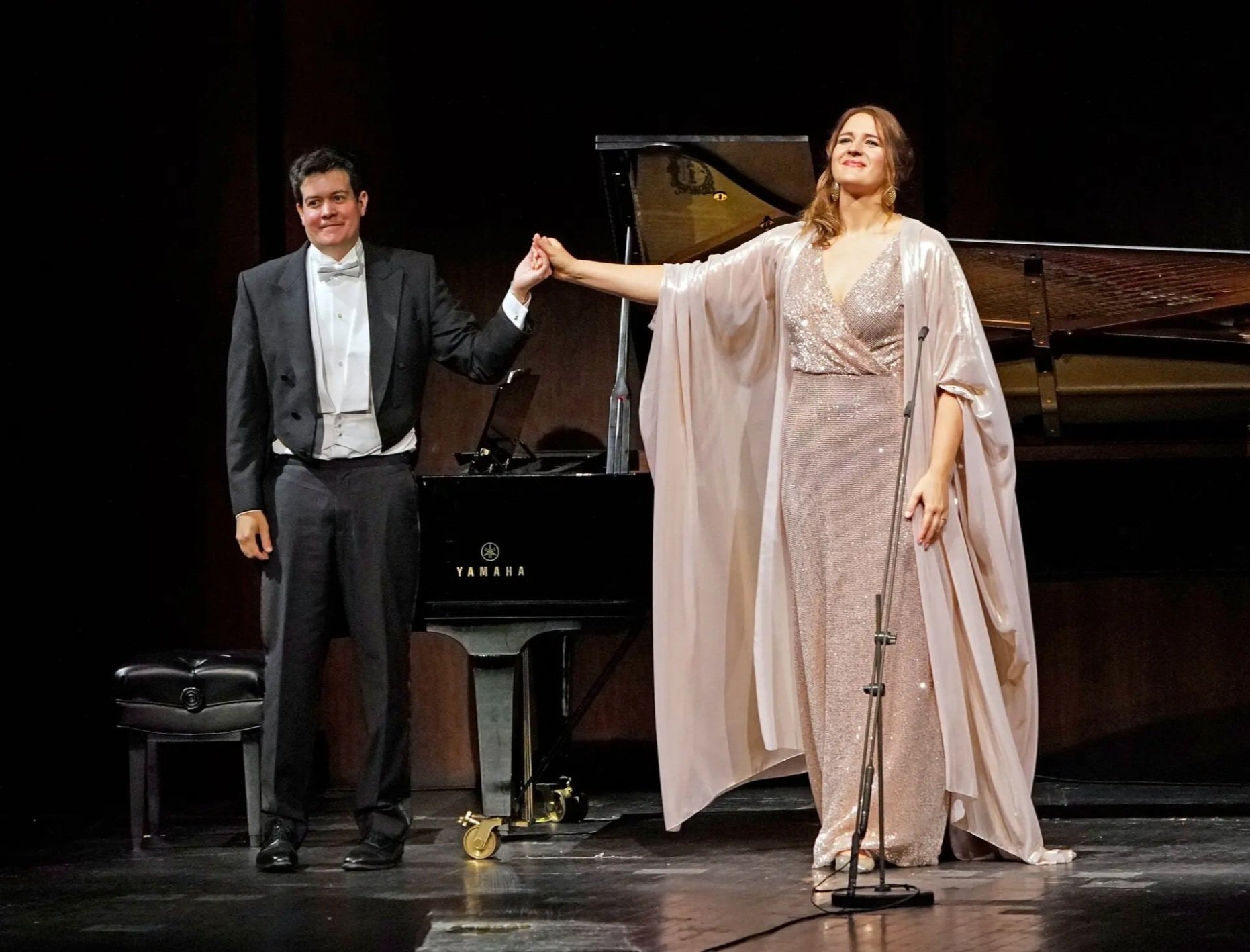Spotlight: “Troika” from Tchaikovsky’s The Seasons
Detail from Sergei Semyonovich Voroshilov’s painting Troika in the Snow
“In your loneliness do not look out at the road,
And do not rush out after the troika.
Suppress at once and forever
The fear of longing in your heart.”
Happy November, opera lovers! It may be a climatically unpleasant month, but it did inspire one of my favorite piano pieces: “Troika” from Pyotr Ilyich Tchaikovsky’s The Seasons. (My preferred album refers to it as On the Troika, but for consistency’s sake, I refer to it as most do.) I love all of the months in this endearing set of lyrical character suites, and June’s Barcarolle is the most popular, but I turn to Troika for a little uplifting or serenity, which we are all bound to need at some point. It was a favorite encore of Sergei Rachmaninoff’s, so I am not alone.
Tchaikovsky was 36 when he wrote The Seasons, at which time he was finishing the score of the ballet Swan Lake. He was not known for his solo piano compositions, but when he accepted the Nuvellist journal’s lucrative commission of The Seasons, he was “very much in the mood for little piano pieces,” and they are such exquisite confections that it is hard to believe the stories that he did not take their composition very seriously. If true, it speaks to his genius that he could casually dash off a set of such delightful piano suites. He called composing on commission “baking musical pancakes,” but I think the colorfulness and sophistication of The Seasons makes the months more reminiscent of cupcakes. A friend of his, Nikolay Kashkin, claimed that Tchaikovsky wrote one piece per month and only when reminded by his valet, but this is contradicted by evidence that the first two suites (January and February, very different from one another) were sent about two and a half weeks after the commission was accepted, and the last seven (June-December) were written in the same month.
Nuvellist published epigraphs to go along with the pieces — in Troika’s case, the above Nekrasov verses —, which the publisher, Nikolay Bernard, chose rather than Tchaikovsky. I suppose you can find a hint of nostalgia if you try hard enough, but Troika’s peaceful lightness makes it hard to connect with loneliness and longing. It’s an Allegro moderato (moderately quick and lively), and in E major too, commonly considered one of the happiest keys. If loneliness has anything to do with this, then I would heartily recommend looking out at the road and rushing out after this troika in such moments, because it’s three minutes of bliss. Sorry, Nekrasov.
Troika's score, if not its epigraph, is incredibly evocative of its title, and so let’s have a bit of fun and fill in the story, taking a bit of inspiration from the above painting. Close your eyes, listen to the song, and see if you can’t imagine this scene. Picture a trio of trotting white horses, outfitted with reins hand-embroidered with wildflowers, pulling through the fresh snow a young couple in a Russian sleigh. The lovers are wrapped in furs, the girl resting her head on her beau’s shoulder, as snowflakes fall gently to join the fluffy white blanket on the ground. For the first minute, it’s a soothing amalgam of up and down scales — flurries on a cloudy but not gloomy day.
Suddenly, the driver cracks the reins and the horses break into a gallop — or perhaps the horses are feeling frolicky and have momentarily run away with the sleigh. The piano briefly alternates between two high notes — the tinkling of the bells on the horses’ harnesses — and then goes into a downward scale. After fewer than forty mischievous seconds, the horses are back to their usual trot, but now the melody has switched to the left hand, with the right hand playing an impish trill-like accompaniment. There's a new energy, a sense of wonder at the enveloping beauty of winter. (Yes, I know November is technically autumn, but we’re dealing with snow here. Why quibble?)
The music winds down as the troika pulls up to the girl’s dacha, slowing to a stop like the final phrase of a Handel aria and discreetly receding into silence before we can see the lovers’ goodnight kiss.
Who to listen to: Renowned pianists like Lang Lang and Bruce Liu have recorded The Seasons, but I prefer Vladimir Ashkenazy’s thoughtful 1999 version. Ashkenazy doesn’t rush the song’s tempo past moderato liveliness, with a more serene than chirpy tone. Enjoy listening!





